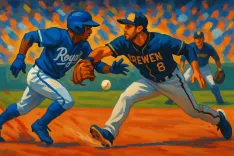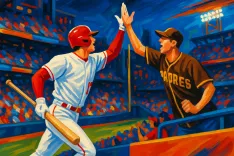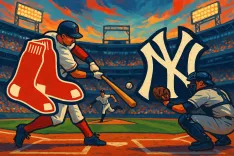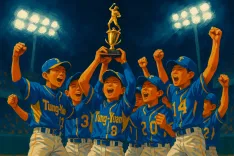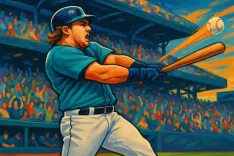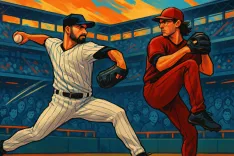MLB Trade Deadline Review: Winners and Losers
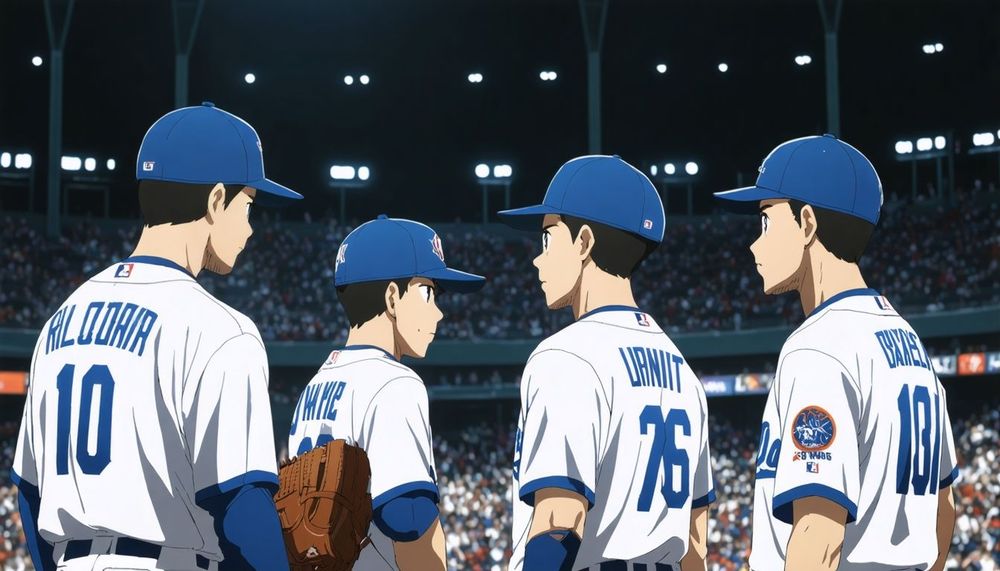
As the Major League Baseball trade deadline loomed, the league witnessed a flurry of activity that significantly reshaped team dynamics. With just hours remaining before the deadline, anticipation ran high, but what transpired during the final moments turned out to be anything but sedate. Key players such as Carlos Correa, Mason Miller, and Eugenio Suárez became central figures in a dramatic day and a half that altered perceptions of several teams. This analysis will evaluate the winners and losers emerging from the deadline.
One standout was right-handed pitcher Mason Miller. Renowned for his electrifying fastball that reaches up to 103 MPH, paired with a devastating slider, Miller has quickly made a name for himself in Major League Baseball. In his limited time in the league, he has posted impressive statistics, allowing only one home run and striking out 94 batters in 183 at-bats that concluded with his slider. With control extending through 2029, his trade value was exceptionally high, demanding a significant return from any potential suitor. Ultimately, the San Diego Padres negotiated successfully, acquiring Miller and left-handed pitcher JP Sears from the Oakland Athletics. In exchange, the Athletics received a substantial package, including top prospects Leo De Vries and Braden Nett, along with additional pitchers Henry Baez and Eduarniel Núñez. This deal appears mutually beneficial, giving the Padres a powerful addition to their rotation while positioning the Athletics for a promising future with their newfound talents.
The Minnesota Twins also confronted pivotal decisions as they navigated injuries and roster changes. Following the loss of pitcher Pablo López to a shoulder injury, the Twins experienced a downturn, culminating in a disappointing record since his injury. Despite Bryon Buxton's efforts to maintain a competitive stance, the organization opted for a sell-off strategy at the deadline. As a result, they parted ways with significant players, including Carlos Correa and Jhoan Durán, prompting questions about their future trajectory. In return for their trades, the Twins obtained various prospects, yet the sense of disillusionment among fans remains palpable as the team ventures into a rebuilding phase.
The New York Mets' bullpen struggles have long been a topic of discussion, with the team targeting relief pitching as a major focus during the trade deadline. Despite Edwin Díaz's remarkable performance, the rest of the relief unit has been inconsistent. To fortify this area, the Mets acquired three notable rental arms: Ryan Helsley, Tyler Rogers, and Gregory Soto. These additions could profoundly change the bullpen's performance; however, the Mets surrendered a considerable amount of future assets, parting with multiple prospects. Evaluating the overall impact of these trades will hinge on the Mets’ success in the postseason.
Conversely, the St. Louis Cardinals found themselves unable to execute a comprehensive strategy at the deadline, failing to capitalize on their opportunity to reshape the roster. Despite rumors surrounding potential trades involving older players, the Cardinals ultimately made minimal moves, leading to questions regarding their future strategy. The return for key players was underwhelming, and the sense of stagnation was evident, marking another disappointing chapter for a franchise usually known for its competitiveness.
In an unexpected turn of events, the Cleveland Guardians trading Shane Bieber to the Toronto Blue Jays raised eyebrows. Despite the pitcher's recent injury history, the Blue Jays acquired a former Cy Young Award winner for a comparatively modest price, further bolstering their strong rotation. This deal exemplifies the evolving landscape within Major League Baseball, as teams navigate injuries and player valuations creatively.
The Cincinnati Reds shifted their focus during the deadline, opting to trade for third baseman Ke'Bryan Hayes, forgoing a potential reunion with former player Eugenio Suárez. While Hayes is recognized for his defensive prowess, concerns linger regarding his offensive production, especially given the Reds' need for a more impactful bat. Additionally, Cincinnati's moves at the trade deadline revealed an intent to strengthen various positions while maintaining a cautious approach regarding key player acquisitions.
Meanwhile, the Seattle Mariners reclaimed Eugenio Suárez, bolstering their roster with a player who had previously been instrumental in their success. Suárez's consistent power and production since his return promise to infuse the Mariners' lineup with much-needed depth. Coupled with other strategic moves, such as acquiring pitcher Caleb Ferguson, the Mariners positioned themselves favorably as they prepare for a competitive stretch.
As the deadline approached, the Texas Rangers made notable last-minute acquisitions, securing pitchers Merrill Kelly, Danny Coulombe, and Phil Maton, solidifying their playoff contention. Conversely, the Los Angeles Dodgers opted for a more restrained approach amid the flurry of activity, potentially missing out on critical roster improvements.
Overall, the MLB trade deadline proved pivotal for numerous teams, sparking significant roster shifts while providing fans and analysts with much to discuss as teams move forward in the season. Evaluating the long-term implications of these trades will be a central focus as teams strive to balance immediate success with future aspirations.
